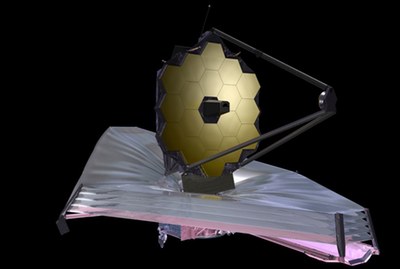Year of the solar systemby Lou Friedman
|
| The big flagship missions—James Webb already in development, Europa and Mars now being born—could become targets for postponements or cuts. |
But let’s not be complacent about that: there are some big issues lurking on the horizon. The increasing cost and longer schedule for the James Webb Space Telescope is an issue that actually has already come into view. More than one billion dollars of new money will be needed, and the launch is now projected to be no earlier than the end of 2015. The planetary science community, meanwhile, is watching two huge trains approach, with the hope that they are not on the same track: the NASA-ESA Europa Jupiter System Mission with a NASA Europa orbiter and an ESA Ganymede orbiter, and the NASA-ESA burgeoning Mars exploration plan with missions in 2016 and 2018 leading to sample return in the 2020s. Both are multi-billion-dollar missions with interlocking commitments in Europe. We can expect both to have high priority in the forthcoming National Research Council decadal survey—although how they will deal with who goes first, and how, is something we all wait to see.
As always, however, the biggest issue on the horizon is money. The hot political issue right now is cutting the budget deficit. This week the lame-duck Congress meets to consider the budget deficit and hopefully resolve the fiscal year 2011 appropriations for the federal agencies. There are many pressures to cut spending and the space program has already been discussed as a candidate for budget cuts by the deficit reducers. At the same time, the NASA administrator is calling for an additional shuttle flight, which would be a very expensive addition to next year’s budget. Political debate will likely spread from just the human space program to the robotic programs, and Earth science may become a target again of the new Republican-dominated House of Representatives. Observing the Earth’s climate change has become to some an ideological issue. The big flagship missions—James Webb already in development, Europa and Mars now being born—could also become targets for postponements or cuts.
This would be sad and perhaps devastating for NASA, for the great flagship missions of Hubble, Spirit and Opportunity, and Cassini/Huygens have brought great glory and reward to NASA and to the public in the past decade. Imagine the popular support for NASA without these missions, or without the new ventures of exploration being planned for the next decade.
NASA, or at least its Solar System Exploration Division, has proclaimed the two-year period from mid-2010 and to mid-2012 as the “Year of the Solar System.” While there have been many other great years of solar system exploration, it is noteworthy and exciting to realize how much is going on in the solar system now and how fortunate we are to be part of so many adventures and discoveries. The recent Deep Impact spacecraft fly through of Comet Hartley 2 is a case in point. It was an extraordinarily successful encounter, and a reminder that rarely does the solar system disappoint us. The comet pictures were spectacular and we’re learning new things about cometary composition and solar system evolution.
| It is noteworthy and exciting to realize how much is going on in the solar system now and how fortunate we are to be part of so many adventures and discoveries. |
We are looking forward this year to the arrival of Dawn at the asteroid Vesta (the second largest asteroid in the solar system and a new world to explore) in mid-summer. This year also will see the launch of Mars Science Laboratory and the Russian Phobos Sample Return in November and of Juno to Jupiter in August and GRAIL with two spacecraft to the Moon in September. Other notable events are Akatsuki from Japan going into orbit (this month) and in 2011 are the Stardust Encounter with Comet Tempel 1 (on Valentine’s Day) and MESSENGER going into orbit around Mercury in March. The biggest planetary news, though, may come outside our solar system, with new discoveries of extrasolar planets from Kepler, expected to be revealed next fall.
My view encompasses both the half-full glass of the rich plethora of planetary missions exploring other worlds and the half-empty glass clouded with uncertainty about future exploration. As we carry our political arguments forward in support of space exploration, I will be trying to mix the contents from the two halves, using the experiences of planetary exploration to make the case for new ventures and new objectives—human and robotic—for a new generation.
